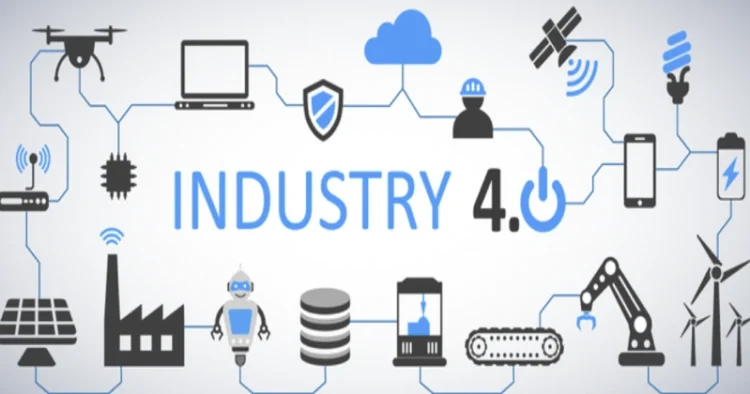Industry 4.0 is the term used to describe the digital transformation of the manufacturing industry, which involves the integration of new technologies such as Internet of Things (IoT), cloud computing, analytics, AI and machine learning into the production processes and operations.
The benefits of Industry 4.0 include increased flexibility, efficiency, quality, customisation, and speed to meet the changing demands of customers and markets.
Industry 4.0 would transform the manufacturing industry in several ways, such as:
Connecting the physical and digital worlds through IoT-enabled industrial assets, big data, cloud computing and analytics, creating a smart industry that can leverage and utilise actionable information for innovation and collaboration.
Automating and optimising the production processes and operations through AI and machine learning, enabling self-learning and self-correcting systems that can adapt to changing conditions and improve quality and efficiency.
Customising and personalising the products and services to meet the specific needs and preferences of customers, creating value-added and differentiated offerings that can enhance customer satisfaction and loyalty
Transforming the value chain and the business model of the manufacturing industry, creating new opportunities for partnership, co-creation and value-sharing among stakeholders, such as suppliers, customers, competitors and regulators.
Industry 5.0 in the Manufacturing Industry
Industry 5.0 is the next stage of development in manufacturing where machines become smart enough to perform complex actions all by themselves, leverage advanced technologies and computing capabilities to collaborate with humans, and work faster and more efficiently. It is also known as “human-centric” manufacturing. The focus of Industry 5.0 is on enhancing the interaction between humans and machines to achieve better results.
Some of the tools that are helping to advance customisable manufacturing in Industry 5.0 are unified data management platforms, digital twins and simulations, augmented reality and virtual reality, and 3D printing.
Industry 5.0 can transform the manufacturing industry in several ways, such as:
Increasing productivity and efficiency: By using smart machines that can perform complex tasks autonomously and collaborate with humans, the manufacturing process can be optimised and streamlined. For example, robots can assist human workers in assembling products, inspecting quality, or handling materials.
Enhancing customisation and personalisation: By using data-driven platforms that can collect and analyse customer inputs, the manufacturing process can be tailored to meet the specific needs and preferences of each customer. For example, customers can design their own products using digital tools and see them come to life through simulations, augmented reality, or 3D printing.
Improving sustainability and innovation: By using advanced technologies that can reduce waste, energy consumption, and environmental impact, the manufacturing process can be more eco-friendly and socially responsible. For example, smart machines can monitor and optimise the use of resources, recycle materials, or produce biodegradable products.
Boosting competitiveness and profitability: By using human-centric approaches that can leverage the creativity, skills, and emotions of human workers, the manufacturing process can be more differentiated and value-added. For example, human workers can focus on tasks that require problem-solving, decision-making, or customer service.
Digital Transformation in the Manufacturing Industry
Digital transformation in manufacturing is the use of digital technologies to improve the processes, products, and workforce of the manufacturing industry. The goal is to increase efficiency, reduce costs, and maximise revenue. Some examples of digital technologies are automation software, eCommerce, sensors, industrial robots, and more.
Digital transformation can transform the manufacturing industry in various ways, such as:
- Improving operational efficiency and reducing costs by automating tasks, optimising workflows, and minimising waste.
- Ensuring the quality of manufactured products by using sensors, analytics, and artificial intelligence to monitor and control quality parameters.
- Improving customer experience by streamlining the ordering process, offering personalised products, and providing better after-sales service.
- Enhancing decision-making capabilities by collecting and analysing data from various sources, such as machines, customers, suppliers, and markets.
- Adapting quickly to changes in customer demands and market conditions by using agile and flexible production systems, such as additive manufacturing, cloud computing, and digital twins.




















Comments